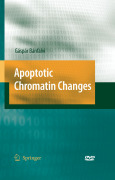
The Greek word apoptosis was used first by Hippocrates as a synonym of dislocations of the bones, structural changes related to tissue, by Marcus Aurelius in political and social context as failure and decline. The physician Galen extended the medical meaning of apoptosis to wound healing and inflammation. Apoptosis, or cell suicide is an integral part of life cycle of plants and animals indicated by the loss of 140-190g (50-70 billion) cells each day in the human adult, amounting to the body weight in one year. The growing interest in apoptosis is indicated by the number of scientific publications since the 1990s which is now more than 140,000 and will exceed 160,000 by the end of 2008. The unique feature of this book is the use of synhronized and reversibly permeabilized cells allowing to visualize the dynamic nature of chromatin condensation through transitory chromatin and chromosomal forms including changes upon genotoxic treatment, which were not seen earlier. The first to show the dynamic change of chromatin structures in a cell cycle-dependent manner Describes the intermediates of chromatin condensation Distinguishes between chromatin and chromosomal forms Describes how round shaped chromatin bodies, the first interphase chromosomes are converted to linear chromosomes Proves the linear attachmentof chromosomes including interphase and metaphase chromosomes INDICE: I. DNA Empire. II. Structural Organization of DNA. III. Chromatin Condensation. IV. Apoptosis. V. Apoptotic Chromatin Changes.
- ISBN: 978-1-4020-9560-3
- Editorial: Springer
- Encuadernacion: Cartoné
- Páginas: 410
- Fecha Publicación: 01/04/2009
- Nº Volúmenes: 1
- Idioma: Inglés
